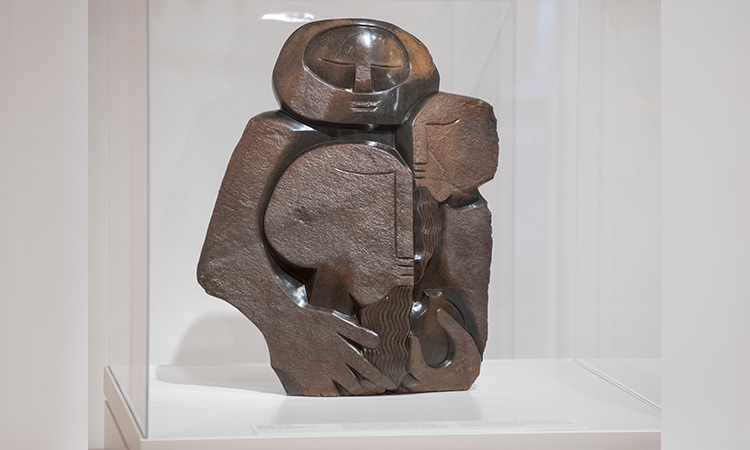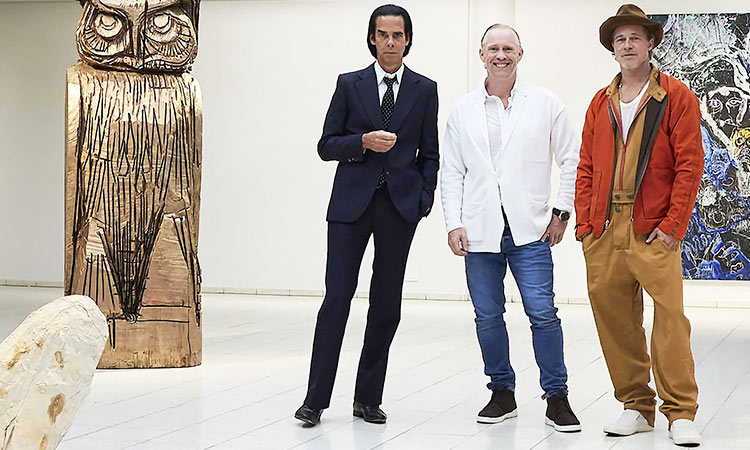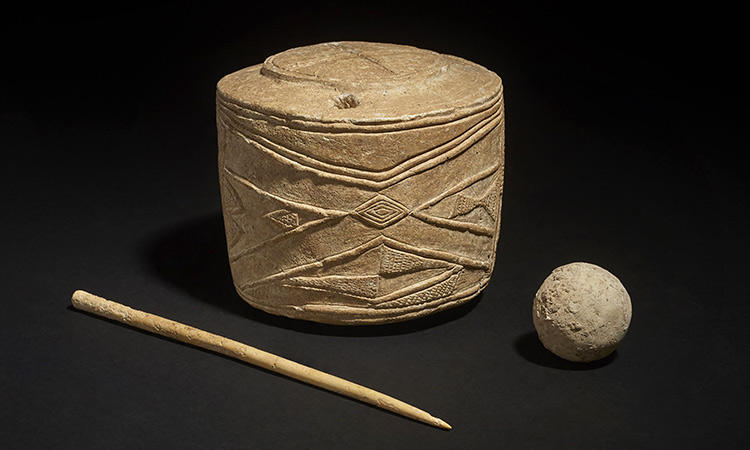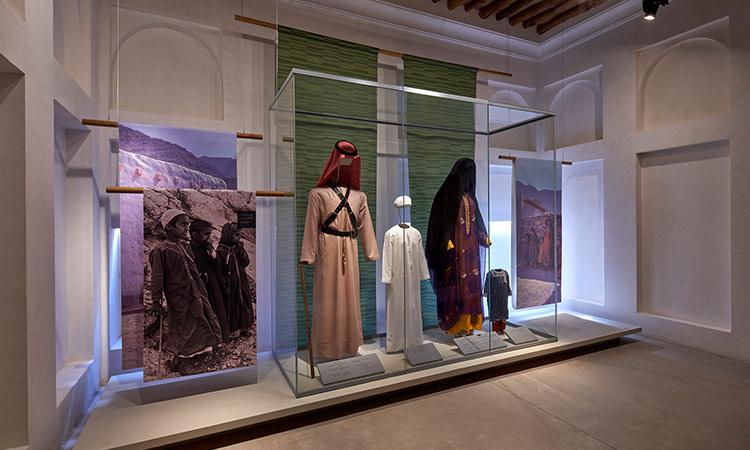Newfields gallery reinstallation leaves curious visitors spellbound

‘The Expulsion of Colin Kaepernick and John Brown’ by American artist Roberto Lugo. Tribune News Service
The Indianapolis Museum of Art at Newfields has started what will turn into a dramatic re-organisation of its permanent collection, shaking up what visitors have seen for more than 15 years in some cases. But the first test reinstallation highlights topics that are already deeply familiar to every person: intimacy and beauty standards, power and identity, death and remembrance.
“Embodied: Human Figures in Art” will grab plenty of eyes from its prime spot in a second-floor gallery that was previously devoted to works that took visitors on a winding path through the Pont-Aven School, Neo-Impressionism and Pointillism. Now, the space has fewer walls with more light that illuminates 50 to 60 pieces spanning 4,000 years and four continents.
READ MORE
Dream come true Pakistani film Joyland receives standing ovation at Cannes
Johnny Depp lawyer urges jury to give him his life back
Andy Fletcher death Depeche Mode keyboardist dies aged 60
The reinstallation, which opened on Dec. 22, is a departure from how the museum, like its peers, has traditionally organised its permanent collection. Moving forward, geographic regions, stylistic movements and time periods alone won’t determine placement of artworks. Instead, “Embodied” is the beginning of a test phase for a new vision that the institution is calling “global thematic display,” which is patterned on groupings according to themes that the broader public will recognize.
We really want our visitors and our guests to be able to take away things with them that will really resonate with them,” said Shelley Selim, curator of design and decorative arts. “Things like art movements, dates, specific artists, art historians — those type of things, they just don’t stick in your head as easily, so we really wanted to find points of connection. And we can often do that by grouping these somewhat disparate things together.”

“You remember how it makes you feel,” said Anna Stein, associate curator of works on paper. “Embodied” was born from the minds of curators and visitor feedback. The curators said the initial idea was called “strike a pose,” which focused on how figures have been posed formally in art. But interpretation planner Maggie Ordon said online surveys and email responses showed that the idea didn’t resonate. “That’s really exciting when you find out you’re in the wrong direction because it gives you an opportunity to pivot and try something new,” Ordon said.
So the team shifted to focus the reinstallation on why and how artists depict the human body, using the lenses of power, beauty, identity, gender and remembrance. “We were really just looking at our collection and kind of letting our collection speak to us and see what came out of that,” Selim said.
For example, female beauty standards, and especially art that displays women’s figures, spoke loudly. Several works in “Embodied” juxtapose beauty ideals at different times and in different cultures. Utagawa Kuniyoshi’s mid-19th-century portrait of poet Fukuda Chiyo-jo shows a narrow face, fair skin and a decorative hairstyle — all attractive hallmarks in Japan at the time.
Across the room, reclining nudes are arranged along a wall, including a 1990 male nude made of glass by Richard Jolley and an 1892 oil by Frank Duveneck of a woman stretched across what appears to be a divan.
“Reclining portraits are almost always of women,” nearby text on a wall reads. “How might this pose have shaped and perpetuated gender norms? How could the interpretation of a reclining nude shift when the subject is male or non-binary?” The reinstallation balances questions that encourage visitors to chart their own paths with contextual information that uses traditional didactics. Every so often, a floor-to-ceiling graphic on the wall digs into the specifics of an artwork. “When we are breaking down images, we really identified (them) with an image on the panel, so it provides a little bit more help for (people) to see what we’re talking about,” Ordon said.
Such is the case for the 20th century Sande Society Helmet Mask, a sleek and shining wood piece created by a Gola artist in Sierra Leone or Liberia. A side panel zooms in on the hairstyle, forehead, eyes, skin and mouth — and what they mean to women who are initiated into the Sande society.
“I’m less likely to remember, ‘OK, this piece was created in this year by this person and they were aligned with this art historical movement,’ and I might be more likely to remember, ‘Oh, this sowei mask or helmet — all of these beauty standards are represented in it, and one of them is a small mouth because the women within the secret society were meant to be very discreet and secretive,” Selim said.
The large wall graphics also offer a foray into breaking down complex and challenging topics. One is devoted to the history behind a plaque that depicts a warrior by an Edo artist of the Royal Brass-casting Guild in the Benin Kingdom, which was in present-day Nigeria. British forces stole a great deal of art, including the museum’s plaque, during an 1897 raid of Benin City. It’s the first time the work has been displayed at Newfields with this context, Selim said, and the display notes that the museum is in the process of finding the proper owner.
“That was an important goal of this exhibition was obviously to be more transparent about not only the history behind the objects in our collection and how complicated and fraught that is but also to be transparent about what we’re trying to do to make up for that,” she said.
In another room is a 2017 porcelain vase by Roberto Lugo called “The Expulsion of Colin Kaepernick and John Brown.” Painting portraits on vases was popular in the 19th century in Europe and the US and allowed the wealthy to honor famous men and those in the aristocracy. Lugo took this idea and flipped it to discuss themes of racial justice by choosing leaders in the movement throughout history. Images of Lugo’s different kinds of graffiti tags that nod to his brother, wife and his own signature show viewers another layer of his work.
Tribune News Service







